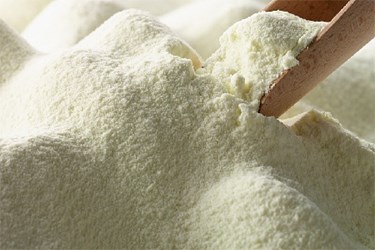Nestle's Research Partners Solve The Soluble Powder Dissolution Riddle
By Karla Paris

Multinational food and beverage company takes steps through its research to improve texture, taste, and nutrient-delivery of its powder-based products
Ever mix up a protein shake and find a bunch of lumps in it? Ever wonder why that instant breakfast is so inconsistent from day to day? The problem is tied to the dissolution of soluble powders and Nestle, along with its research partners, have taken a big step forward in creating food and beverage products with smooth, even, and consistent textures.
On June 4, Nestle announced its collaboration between the Nestlé Research Center (NRC) of Lausanne, Switzerland and the ESPCI Paris Tech (École Supérieure de Physique et de Chimie Industrielles) Paris, France, has discovered a novel physical mechanism by which water wets and then dissolves soluble solids. The findings are a major advance in our understanding of the mechanisms underlying the dissolution of soluble powders. The results of the study have been published in the journal Physical Review Letters. For Nestle, this advancement is a huge win as the company’s product portfolio which includes various powder-based baby foods, cereals, confectionery, dairy, drinks, and other product types reach millions of consumers.
White Paper: Efficiencies In Powder Dispersion For Manufacturers
Until now, the underlying problems associated with the dissolution of soluble powders have been poorly understood. Optimal dissolution of powders is critical for providing consumers with a smooth and appealing beverage that ensures adequate delivery and uptake of important nutrients. Unfortunately, incomplete dissolution, with concomitant formation of lumps, can arise during the development of new, nutritious powdered food products.
Successful dissolution of a powder is dependent on the physical and chemical nature of both the substrate and the solvent. In the study conducted by the Nestle-led group, the scientists examined the contact between a droplet of water and a thin layer of a long chain sugar, coated on a smooth surface. Various sugars used in the study were non-crystalline “amorphous” sugars that lack an organized molecular structure and as such, can easily undergo a change of state.
Recommended Mixing Equipment For Milk Powders
The absorption and diffusion of the water in the sugar coating were also measured by analyzing the color changes of reflected light. This study shows for the first time that the manner in which a water droplet spreads over a non-crystalline substrate, such as maltodextrin, strongly depends on the amount of water absorbed and on the softness of the substrate in the immediate vicinity of the water droplet.
The current work is an important step towards mastering the dissolution of powdered food products. The quantitative theory developed will allow the conditions of dissolution of different soluble substrates to be predicted with greater accuracy. As a consequence, this will allow the development of a wider range of products that are not only nutritious but more pleasurable for the consumer.
